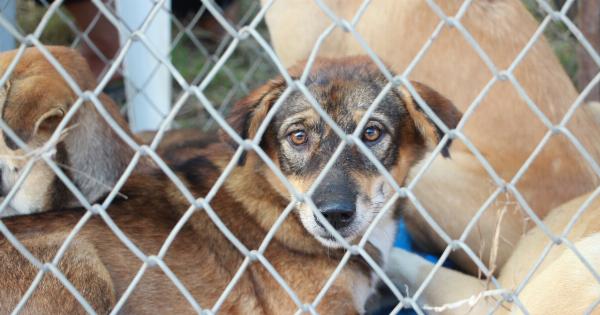Stray animals are a global issue that affects both human and animal welfare. With the increasing urbanization and population growth, the number of stray animals has been on the rise.
These animals, without proper care and shelter, often suffer from hunger, disease, and abuse. However, there is hope for the future of stray animals, and your input can make a significant difference in their lives. In this article, we will explore the challenges faced by stray animals and discuss potential solutions.
The Global Stray Animal Problem
The issue of stray animals is prevalent across the globe. Whether it’s stray dogs, cats, or other animals, they can be found in rural and urban areas, in developed and developing countries.
The root causes of this problem are many and varied, including pet abandonment, lack of affordable spaying and neutering programs, and inadequate animal welfare legislation.
The impact of stray animals on communities is multifaceted. Firstly, these animals often face numerous health risks, including starvation, disease transmission, and exposure to harsh weather conditions.
Secondly, they can pose a threat to public safety, especially when they form packs or exhibit aggressive behavior. Additionally, stray animals can contribute to environmental damage and depletion of local wildlife populations.
The Role of Animal Welfare Organizations
Animal welfare organizations play a crucial role in addressing the stray animal problem. These organizations rescue, rehabilitate, and rehome stray animals, as well as provide them with necessary medical care.
Moreover, they strive to raise awareness about responsible pet ownership through educational initiatives and community outreach programs.
However, the resources of animal welfare organizations are often limited, and they face significant challenges in managing the overwhelming number of stray animals.
It becomes evident that a collaborative approach involving government bodies, local communities, and individuals is necessary to create a sustainable solution.
Government Initiatives and Animal Control Policies
Government initiatives and animal control policies can have a substantial impact on the stray animal population. This involves enacting and enforcing laws related to pet ownership, stray animal management, and spaying/neutering.
Additionally, governments can allocate funding for low-cost spay and neuter clinics, animal shelters, and public awareness campaigns.
Furthermore, implementing effective animal control policies, including trap-neuter-return (TNR) programs, can help stabilize the stray animal population.
TNR involves trapping stray animals, sterilizing them, and then returning them to their original location. This approach prevents further breeding while allowing the animals to live out their lives without causing nuisance or harm.
The Importance of Spaying and Neutering
Spaying and neutering are essential in reducing the number of stray animals. By preventing reproduction, these procedures help control the population growth.
Moreover, spaying and neutering offer health benefits to the animals themselves, reducing the risk of certain diseases, including certain cancers.
It is crucial for pet owners to understand the importance of spaying and neutering their pets. Education programs can help dispel myths and misconceptions surrounding these procedures.
Additionally, providing affordable spay and neuter services, especially in underprivileged communities, can encourage more pet owners to take responsible actions.
Importance of Responsible Pet Ownership
Responsible pet ownership plays a significant role in preventing the increase of stray animals. By taking proper care of their pets, owners can minimize the likelihood of abandonment.
This involves providing adequate nutrition, shelter, veterinary care, and socialization. Pet owners should also ensure their pets receive proper identification, such as microchipping or tags, to increase the chance of reunion if they ever get lost.
Education programs targeted at potential and current pet owners are essential to promote responsible pet ownership.
These programs should focus on the commitment and responsibilities associated with owning a pet, as well as the benefits that come with it. By fostering a culture of responsible pet ownership, we can reduce the number of stray animals in the long run.
Community Involvement and Volunteerism
Communities play a crucial role in solving the stray animal problem. By getting involved in community initiatives and volunteering at local animal shelters or rescue organizations, individuals can directly contribute to the welfare of stray animals.
Community involvement can take various forms, such as organizing adoption events, fundraising for animal welfare organizations, or even fostering stray animals temporarily until they find their forever homes.
By working together, communities can create a compassionate and safe environment for both pets and humans.
Education and Awareness
Education and awareness programs are key to addressing the stray animal problem from its root causes. These programs should target various groups, including children, pet owners, and the general public.
Introducing animal welfare education in schools can help instill empathy and compassion towards animals from an early age.
Teaching children about responsible pet ownership, the importance of spaying and neutering, and the ethical treatment of animals can create a more compassionate society in the future.
Creating public awareness campaigns, utilizing social media platforms, and collaborating with local media outlets can help educate the general public about the stray animal problem.
By sharing stories, raising awareness about adoption opportunities, and providing information about spaying, neutering, and responsible pet ownership, we can foster positive change.
Technology and Innovation
Technology and innovation have the potential to revolutionize how we address the stray animal problem.
From mobile applications that connect potential adopters with rescue organizations to advanced sterilization techniques, these advancements can significantly improve the welfare of stray animals.
One innovation gaining traction is the development of mobile veterinary clinics. These clinics can reach remote areas or underprivileged communities, providing essential veterinary services and affordable spaying/neutering options.
Additionally, advances in tracking devices can aid in reuniting lost pets with their owners.
Technology also plays a role in raising awareness through social media platforms and online campaigns. With the help of the internet, animal welfare organizations can reach a broader audience and engage people in the cause more effectively.
International Cooperation
Stray animals are not confined to national borders, and addressing this issue requires international collaboration. Countries can learn from each other’s successful strategies and share resources and expertise.
Organizations like the World Animal Protection work internationally to raise awareness about the stray animal problem and advocate for improved animal welfare legislation.
Collaborative efforts and knowledge exchange can help accelerate progress towards a future where stray animals are treated with compassion and care worldwide.
Your Input Matters
Ultimately, the future of stray animals lies in the collective efforts of individuals, communities, governments, and organizations. Your input matters in shaping a better future for these animals.
Consider volunteering at your local animal shelter or rescue organization, supporting spay and neuter initiatives financially, or even adopting a stray animal yourself.
By spreading awareness, practicing responsible pet ownership, and supporting organizations working towards the welfare of stray animals, you can make a difference.
The Time for Change is Now
Addressing the stray animal problem requires a comprehensive and proactive approach.
By prioritizing education, responsible pet ownership, government involvement, and community collaboration, we can create a future where stray animals are no longer left to suffer.
Together, let’s work towards a world where every animal has a loving and safe home. Together, let’s shape the future of stray animals.































